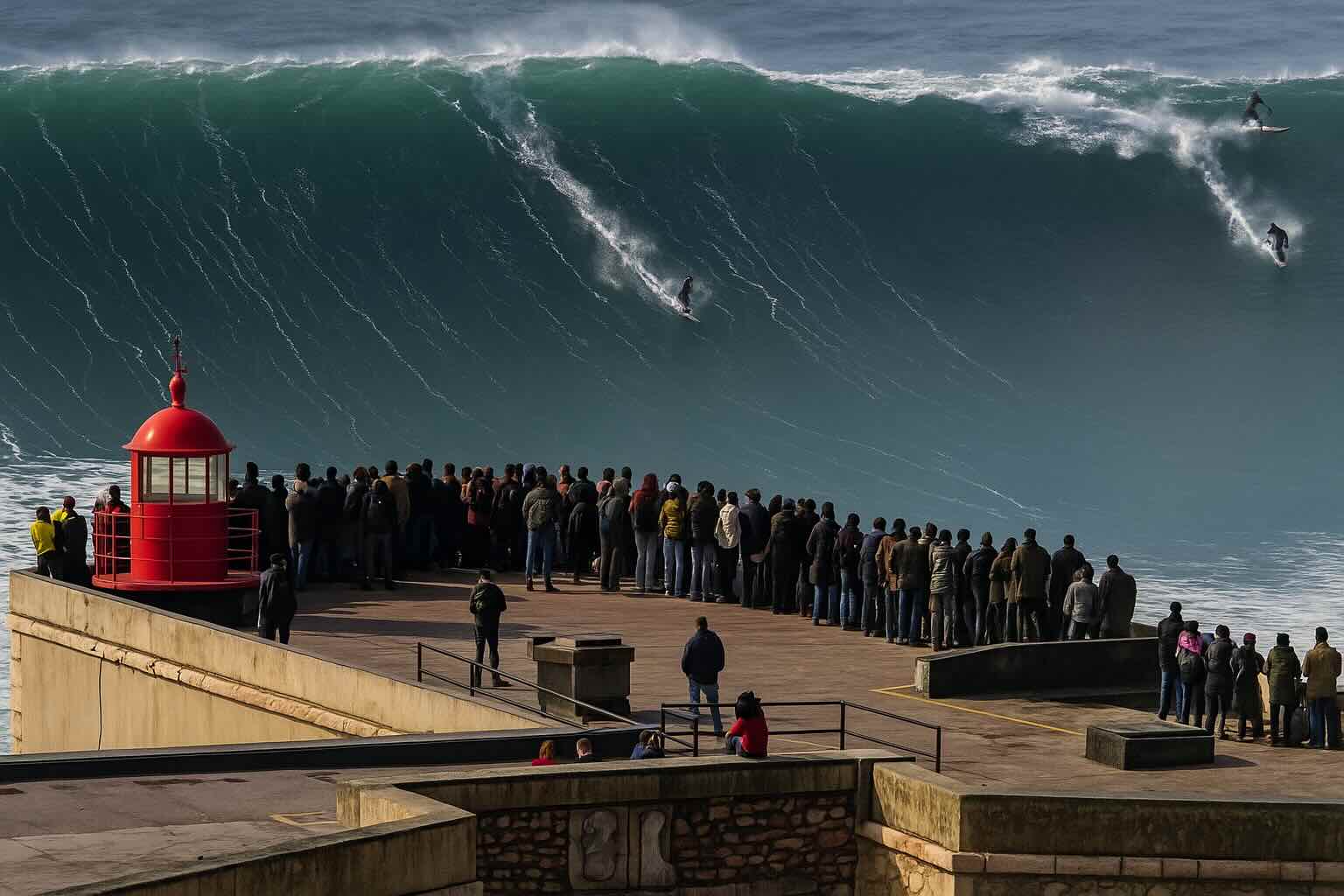Imagine sailing along the peaceful Pacific coast, waves gently lapping against the hull, when suddenly, out of nowhere, a towering wall of water rises before you — nearly four stories tall. No warning, no storm, just one colossal wave breaking through the calm. That’s exactly what happened off the coast of Ucluelet, British Columbia, in November 2020. And years later, this rogue wave is still shaking up the scientific community.
Though it wasn’t the tallest wave ever recorded, it’s considered the most extreme in modern history. Captured by a smart buoy operated by Canadian firm MarineLabs, the wave measured a staggering 17.6 meters (57.7 feet), nearly three times higher than the surrounding waves. In oceanography, a rogue wave is typically defined as one that’s twice the height of nearby swells. This wave didn’t just meet the definition — it shattered it. Even physicist Johannes Gemmrich described it as “probably the most extreme rogue wave ever measured.”
Rogue Waves: From Maritime Myth to Measurable Reality
The strangest part? It didn’t arrive with a storm. It formed in calm seas, defying all the conditions typically associated with such events. For years, tales of massive waves destroying ships had been dismissed as maritime myth, the stuff of sailor folklore. But that changed on January 1, 1995, when a rogue wave was officially recorded at the Draupner oil platform in the North Sea. That single event proved that freak waves were very real — and very dangerous.
Since then, scientists have continued to study rogue waves with increasing urgency, and none have caused quite as much fascination as the Ucluelet wave. What set it apart wasn’t just its size, but the fact that it appeared without any of the usual triggers. There was no extreme weather, no seismic event, no predictable buildup. Just a quiet ocean, and then — a mountain of water.
Could Climate Change Be Making Rogue Waves More Common?
The wave was recorded by one of MarineLabs’ advanced monitoring buoys, which are designed to track real-time wave data for maritime safety. Their mission is to help protect ships, offshore platforms, and coastal communities by providing early warnings for hazardous conditions. CEO Scott Beatty has emphasized the value of this real-time data, not only for navigation and operations, but also for understanding how climate and ocean conditions are evolving in dangerous ways.
Scientists now worry that rogue waves may become more frequent as the planet warms. Ocean surface temperatures are rising, wind patterns are shifting, and extreme weather events are intensifying. Together, these changes create an ideal environment for rogue waves to form more often — and potentially at even greater heights. A study published in 2020 showed that wave heights in the North Pacific are already increasing, and newer models suggest that rogue waves in the future could be up to four times more powerful than anything we’ve seen so far.
A Wake-Up Call From the Depths
That’s not science fiction — it’s fast becoming science fact. If rogue waves can strike during calm weather, their unpredictability makes them one of the most underestimated natural threats. And with growing maritime traffic and offshore infrastructure, the stakes are only getting higher.
I remember sailing not far from Vancouver one summer. The ocean looked tranquil, almost boring. But stories like the Ucluelet wave remind us that even on the quietest days, the sea holds secrets. Beneath that calm surface, massive forces can be building silently. We may not see them coming, but they are there — waiting.
Understanding rogue waves isn’t just a scientific curiosity. It’s about safety, survival, and preparing for a future where ocean behavior may grow more violent and less predictable. Whether you live by the coast, work offshore, or simply enjoy being out on the water, these waves are a reminder of how little we still know about the ocean — and how important it is to keep asking questions.
